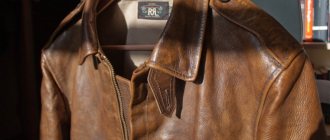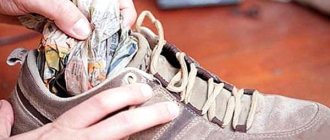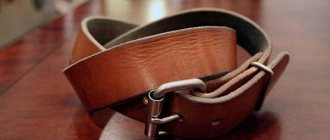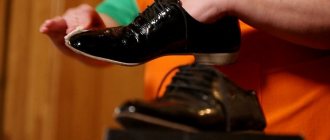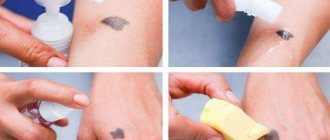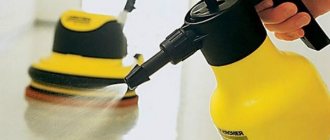Natural leather, along with a lot of advantages over artificial leather, has a significant drawback. Its porous, multilayer structure tends to lose some of its valuable properties over time or under the influence of negative factors, lose moisture, elasticity, become harder, rougher, and become covered with cracks. This leads to deterioration in appearance, inconvenience of wearing, and irreversible damage to leather products.
Various compounds for professional use and for home use help soften raw hides for subsequent processing, tailoring products, and extending service life. Manufacturers produce a wide range of such compositions of different types, effects, and intended purposes. The Tavro online store offers to buy professional products for softening natural leather in Moscow with delivery throughout Russia.
How to proceed?
If leather clothing or gloves get dirty, it is easy enough to wipe the product with a damp cloth and the problem will be solved. A small amount of water on the front side of the leather will not harm it, even if you get caught in the rain while wearing a leather jacket or accidentally step into a puddle with a leather boot. But a large amount of water can wet the inner surface of the skin, and then after drying it will become excessively hard and dry.
But don’t rush to get rid of your favorite thing. Today, many ways have been invented to help solve the problem. There are three main options:
- Folk methods or, in modern terms, “life hacks”.
- Professional skin care products.
- Dry cleaning services.
These methods to soften the skin are arranged in ascending order of cost. The cheapest way to deal with the problem is with folk remedies at home, but you will have to be responsible for the results yourself. Let's consider each of the possible options from an efficiency point of view.
What kind of discomfort can there be?
In most cases, the shoes will not fit exactly on the foot, so you will have to break them in or wait until the foot adapts to this model. However, high-quality and reliable leather shoes can begin to cause discomfort when they are no longer new.
As a rule, the discomfort is associated with pressure in a certain area - the heel, toe, midsection, foot, and so on. To get rid of such a defect, you should use a variety of methods.
Glycerin and sunflower oil
These are quite popular methods that members of online communities often share with each other. Unfortunately, experts do not recommend using these, although affordable, but harmful to products. Softening the skin with glycerin makes it fragile, and sunflower oil has only a temporary effect. Subsequently, the product will harden even more, and the skin from sunflower oil will become unpleasantly shiny.
Quick help - Vaseline
This product is found in almost every home. Vaseline will soften and rejuvenate leather products. This product is ideal for light and elegant jackets, as it does not leave stains and has no foreign odor.
To restore a leather jacket, rub Vaseline all over it, squeezing it straight out of the tube until it is medium damp. After this, leave the item for 15-20 hours until completely absorbed.
Goose fat
Our grandparents also knew how to soften the leather on shoes - with the help of goose fat. You need to cut out the fat from the goose, melt it in a frying pan and let it cool. Lard is formed, which needs to be rubbed on the skin until the fat stops being absorbed. If you believe the reviews, then even old chrome boots can be revived in this way. Experienced shoemakers also use goose fat.
Unfortunately, the availability of this method can be challenged - you need to have a goose on hand. If you don’t have it at home, you can buy it in a store or market. But the amount of time spent and the cost of the bird is comparable to professional skin care products.
Castor oil
Skin softeners are sold at any pharmacy. One of them is castor oil. They need to soak a cotton swab and blot the surface of gloves, shoes or clothing several times. The product is found to be effective and harmless to the product - the material will again become elastic and soft. At the same time, castor oil is very inexpensive, and to use it, you do not need to spend a lot of time on additional manipulations, as is the case with goose fat.
Method one - mechanical processing
Despite its sensitivity to the environment and elasticity, leather is considered a fairly durable material. To speed up the breaking-in process, place the jacket on a clean floor, cover it with a sheet and stomp on it.
The minimum time for the result to be noticeable is 5 minutes. The rougher the skin, the more time you need to trample on the thing.
Note! If the jacket is decorated with patterns, rhinestones, spikes and other decorations, it is better not to use this method.
Professional products
There are a number of manufacturers that are designed to deal with the problem of hardened skin. Professional shoe products will help - each of them must indicate the type of leather and the manufacturer's recommendations.
What brands should you buy? This question is quite difficult to answer, since the price range in stores is designed to suit any budget. It is worth noting that experts still do not advise saving on skin care, since it is much cheaper to purchase an expensive product than to buy expensive gloves or shoes every year.
Today, such manufacturers as Salton, Ecco, Salamander are famous. They offer a fairly wide range of products for various materials, including leather - natural and artificial. Buyers note the acceptable quality of any of these products. Considering the affordable price and ease of use, it is the professional products of these brands that can be called the “golden mean” in the matter of methods for softening leather products.
How to soften the leather of a product with a larger surface, for example, a leather jacket? The Kozhanka softening spray is suitable.
Basic rules for maintaining leather items
Leather is a hygroscopic material that absorbs and releases moisture well. To ensure that the required amount of moisture remains in the product, it is important to promptly treat the skin with special creams or sprays. Do not store products near heating devices or dry them in open sunny places. Do not dry your shoes with a hairdryer or on heating appliances.
The skin needs air, so storing products made from this material in closed plastic bags is not recommended. To keep things in good condition, you should regularly use special impregnations that will retain moisture. Do not use aggressive agents, such as acetone, alcohol or gasoline, to clean natural leather.
Porous and soft leather should be periodically wiped with a soft sponge, while suede should be brushed and vacuumed.
Specialist help
If the product does not respond to either traditional methods or professional sprays and foams, then you should contact a specialist. Some owners of leather goods do not even risk affecting the leather with anything on their own, but immediately run to the dry cleaner.
It is worth choosing one whose list of services includes processing of leather accessories and clothing. Professionals will work with the product using proven technologies. Unfortunately, such services are not cheap. Therefore, this method is the most effective and high-quality, but inaccessible.
How to soften new shoes to avoid the formation of calluses? To do this, you can contact a shoemaker's shop. The shoemaker has in his arsenal special means with which he treats shoes in order to then place lasts in them. This method carries some risk - under the influence of the pads, the seams may burst and the product may deteriorate.
Special Moments
Unfortunately, this opportunity is not always available. If it is still not there, then it is necessary to use various professional methods.
There are various chemicals available on the market that can soften shoe leather quickly and reliably. In particular, such products include creams and other products.
You can find them in standard hardware stores or contact shoe centers. Many workshops also offer their clients various products that can soften shoes.
It happens that consumers use creams designed for a person’s face or hands to soften their shoes. In principle, tanning uses skin that is somewhat similar to human skin, but the effect of such creams on it will be very weak.
It turns out that the effect of such products on softening shoes will be insufficient.
For prevention
Products made from genuine leather are not only expensive, but also require careful care. It is much easier to prevent troubles than to spend money and effort fighting them. It is impossible to protect shoes or gloves from street dust and dirt, and contact with road reagents in winter is completely inevitable. But no one has yet canceled the basic rules for caring for shoes and other leather products:
- If the skin does get wet, it needs time to dry completely - a day or two. When it comes to shoes, it is better to have two or three pairs in reserve, and while one pair is “resting”, wear another.
- Dirt and dust must be removed immediately upon arrival from the street. If you leave this activity “for later,” then within a day the dirt may be absorbed. Then even professional products will be powerless, and all that remains is to mask the stains.
- Shoes must be put on only with the help of a spoon, the laces must be unlaced, and the zipper must be unzipped all the way. You should not save time and neglect these tips, otherwise the shoes will quickly become deformed and lose their original appearance.
- If the products require repair, you must contact a specialist immediately.
- Care products for shoes or other products must be selected carefully. It is important to consider your skin type and manufacturers' recommendations. There are no truly high-quality universal products.
Proper bag care: 11 tips and life hacks
SoldClean
* Protect the bag from moisture
This applies to bags made from genuine leather and suede, and from artificial and patent leather. Moisture - snow, rain, an accidentally spilled drink - if not removed in time, can change the texture and color of the material. It is better to carry napkins with you (for example, ordinary paper ones) and wipe the bag with them from any moisture that has fallen on it as quickly as possible. Do this even if you use water-repellent impregnation, more on that below. It is better not to use wet wipes.
How to properly care for outerwear
* Use water-repellent treatment
This impregnation not only protects the bag from moisture, but also gives the material dirt-repellent properties: the bag will get less dirty. It is optimal to use the impregnation from the first day of use of the bag and then regularly renew the protective coating (how often to do this is usually indicated on the packaging of the product). Before using any impregnation for the first time, do a test on an inconspicuous place.
exclusivelymulberryblog.wordpress.com
* Try to match the impregnation to the type of material of your bag
Many impregnations are positioned as universal, suitable for different types of materials. But ideally, you should look for an impregnation specifically designed for the type of material from which the bag is made.
— Read the instructions carefully: some impregnations cannot be used for suede, nubuck or patent leather.
— Pay attention to whether the impregnation has a tinting effect, so as not to spoil the color of the bag.
— There are special products for suede and nubuck, for smooth leathers, for exotic leathers, for patent leathers.
How to easily clean leather and suede
* To clean a leather bag, wipe it with a damp cloth
From time to time, a leather bag needs to be cleaned by wiping with a soft cloth slightly moistened with water. You can add a drop of liquid soap to the water, or ideally a special shampoo for skin. Moisture is not good for the skin, so after wiping the bag, immediately wipe it with a dry cloth or napkin. Repeat cleaning as necessary, preferably no more than once a week. Don't clean suede bags like this!
Buffalo Jackson
* Use cream, but in moderation
A smooth leather bag can be treated with a special leather cream from time to time. If you managed to choose a colored cream that exactly matches the color of the bag, great; in other cases, it’s better to use a colorless one. Use the cream only after you have wiped the bag and the leather is completely dry. Do not apply too much cream, a thin layer is enough. Wait 20-30 minutes and dry the bag well with a soft, dry cloth. Polishing will add shine to the skin and protect clothes from cream stains.
How to properly care for suede shoes
* To clean suede bags, use special tools and products
We wrote in detail about how to care for suede shoes - the same tips are suitable for caring for a suede bag. In short: clean only dry suede, use special brushes and erasers, as well as cleaning foam. Do not wash suede, do not clean it with a damp sponge or cloth, or use creams intended for leather on it.
howtowithrhondabryant.wordpress.com
* The lining of the bag can be washed, but carefully
The lining may need to be washed if it becomes evenly soiled from use and if, for example, something spilled in the bag. You can wash the lining, but you should act carefully so as not to spoil the material of the bag. Procedure:
— take everything out of the bag, check all the pockets;
- turn the lining out;
— pour water into a basin or other container and dissolve liquid laundry detergent in it (it is better not to use powder, it dissolves less easily and can leave streaks);
- stains on the lining can be pre-washed or a solution of detergent can be applied to them and left for 20-30 minutes;
- then immerse the lining in water and wash, being careful not to let water get on the material of the bag;
— afterwards the lining must be rinsed;
— blot the lining to remove as much moisture as possible, and dry the bag with the lining turned out.
If the lining of the bag does not turn out, you will have to use dry cleaning.
blog.madewell.com
*Be careful with “at-home” cleaning methods
On the Internet you can find many tips for cleaning leather and suede using a variety of non-specialized products, from lemon and egg white to gasoline and acetone. If you're lucky, these methods can have a positive effect, but the opposite is quite possible: the bag may be damaged. If, at your own peril and risk, you decide to use one of the “folk” cleaning methods, test it in an inconspicuous place. If the bag is heavily soiled, it is better to use the help of professionals to clean it.
How to wash knitwear: 8 simple rules
*Do not wash leather or suede bags
In fact, some bags can survive washing, but many bags, especially those washed in a machine, will most likely have to be thrown away.
DIY bag repair
* Do not handle the bag with hands that have just been coated with cream.
This is especially true for bags made of suede and similar matte materials. Hand cream can leave greasy stains on the material of the bag. The handle of a leather bag can also darken from such regular exposure. You can wrap the handles in a beautiful scarf: this decoration will simultaneously protect the material from stains.
PurseBlog
* Tips for storing bags
— Before storing your bag, remove everything from it. Clean and dry the bag.
— To prevent the bag from becoming deformed, put some kind of filler inside. Do not use newspapers; the dye may stain the lining. Soft light paper or fabric will do.
— To protect against moisture, you can use bags with moisture-absorbing material (bags and shoes are often sold with them).
— Store the bag in a dust bag, a special fabric bag. If you don't have one, sew it or just wrap the bag in fabric.
— Store the bag in a place protected from direct sunlight.
— Try to lay the bag so that it lies freely and does not become deformed.
How to repair a torn backpack: master class
Why can natural silk be washed with hair shampoo?
Bag organizer for shoes: master class
How to wash black clothes correctly

